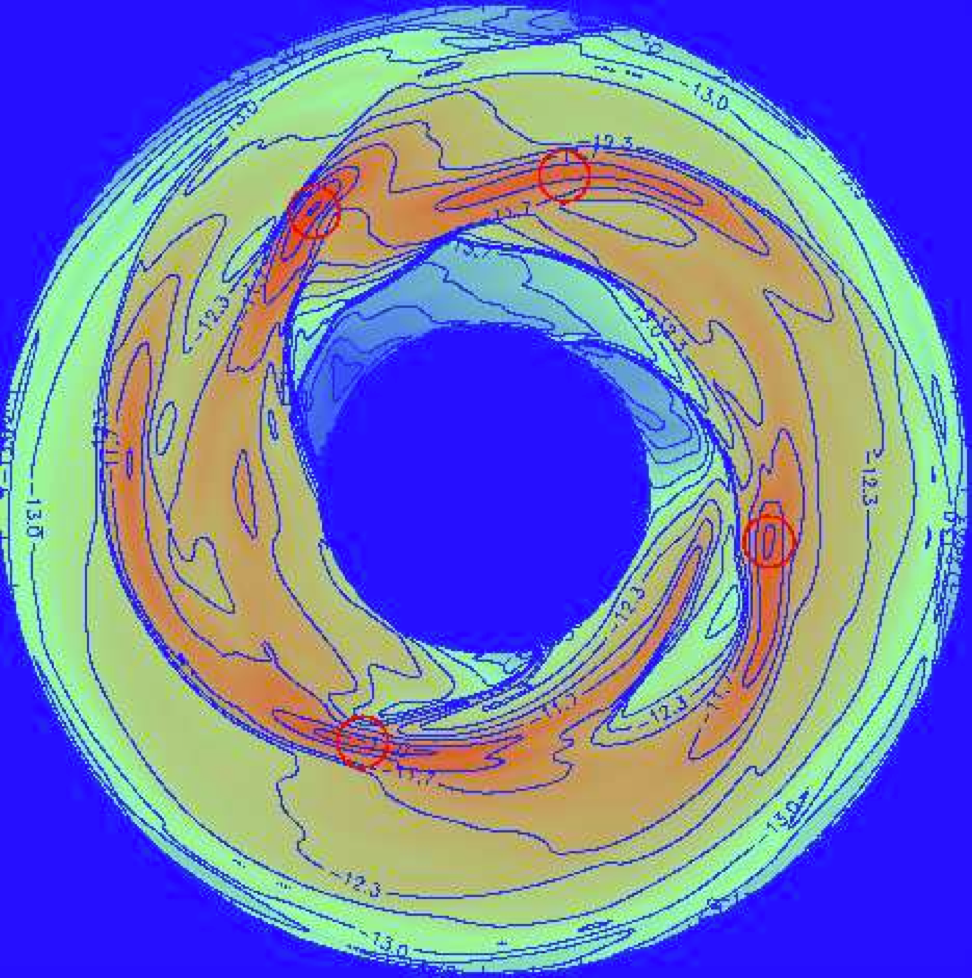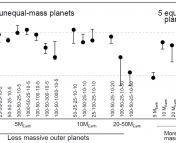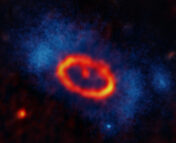Title: Formation of polar circumstellar discs in binary star systems
Authors: Jeremy L. Smallwood, Rebecca G. Martin, and Stephen H. Lubow
First author’s institution: Institute of Astronomy and Astrophysics, Academia Sinica, Taipei 10617, Taiwan; and Department of Physics and Astronomy, University of Nevada, Las Vegas, 4505 South Maryland Parkway, Las Vegas, NV 89154, USA
Status: Published on ArXiv, 27 Jan 2023. Accepted for publication in MNRAS.
When stars are born, they are usually orbited by a protoplanetary (or circumstellar) disk which contains gas and dust that may eventually form planets. Many stars, however, are not alone in space but instead have a binary companion — another star of oftentimes very similar mass that orbits the primary star.
Today’s authors investigate a polar circumbinary disk: a disk around both binary stars that is in a “polar” configuration with respect to the inner binary orbit. A polar orbit in astronomy references if the path of the orbit crosses the poles of the object that is being orbited. For example a satellite that is in a polar orbit around Earth would fly above the North and South poles. In today’s case, the gas in the circumbinary protoplanetary disk passes above the poles of the binary orbit, and therefore does not orbit in the same plane as two stars. This corresponds to a relative inclination of 90 degrees.
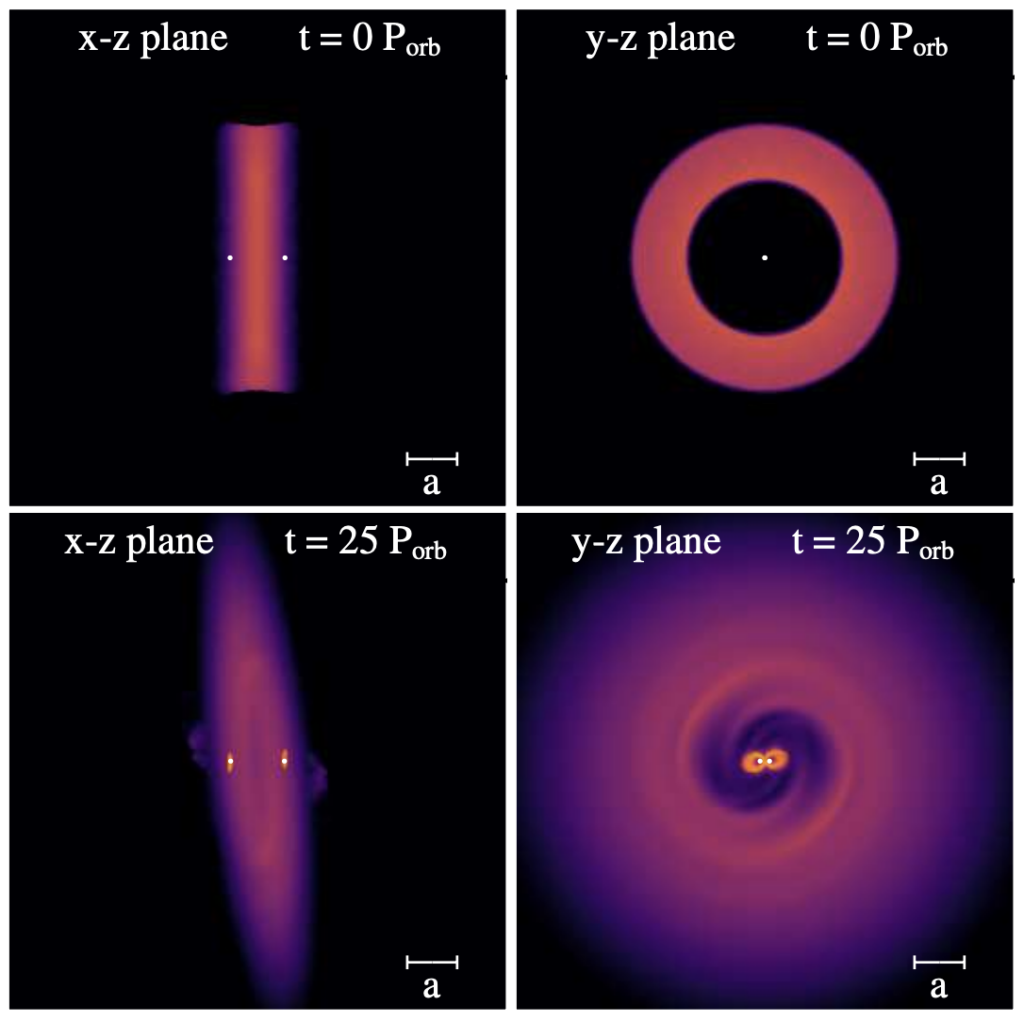
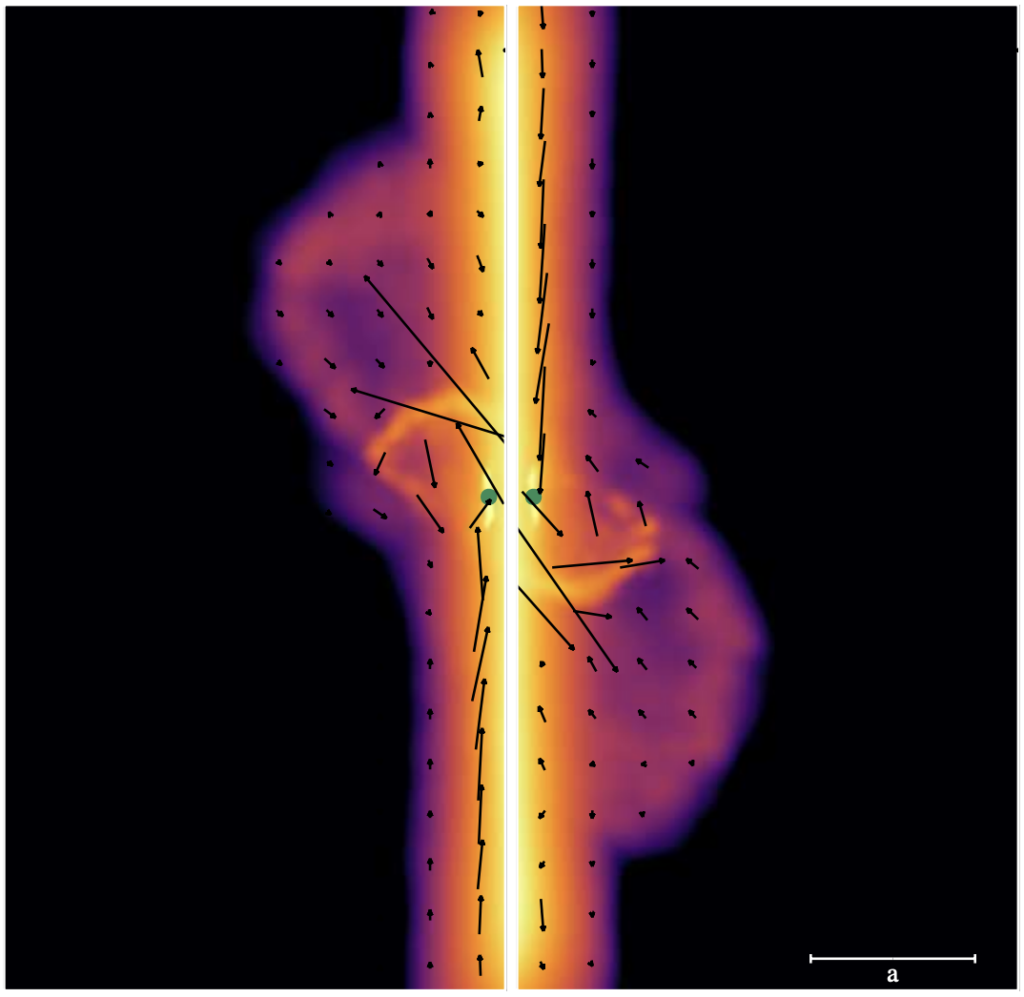
Such a setup may seem exotic, but it has indeed been observed, for example around the protostars IRS 43, or HD 98800 BaBb. Consequently, the questions on these systems’ origin, and dynamical behavior arise naturally.
The authors set up a hydrodynamical simulation of a polar circumbinary disk. The top panels of Fig. 1 shows the initial setup, whereas the bottom panels show the system after 25 orbital periods. Gas from the circumbinary disk has flown from the outer disk onto both of the binary stars and formed two circumstellar disks around each star. These two secondary disks likewise are in polar alignment with respect to the binary orbit. There is also a cavity that is relatively devoid of gas in between the larger circumbinary disks and the inner circumstellar disks.
Interestingly, since the binary orbit is set up with an eccentricity of 0.1, the so-called Kozai-Lidov mechanism can operate . For two polar circumstellar disks the Kozai-Lidov effect is manifested in an oscillation of their eccentricities and tilt. The masses of the circumstellar disks likewise oscillate in time due to this oscillating eccentricity. Some material is flung outwards out of circumstellar disks into the gap between the binary stars and the circumbinary disk. This is shown in Fig. 2, which shows an edge-on view of the entire system. The gas that is displaced relative to the plane of the circumbinary disk is distributed asymmetrically around the binary, and will fall back into the disk gap. (Also see this Astrobite for a similar application of the Kozai-Lidov mechanism).


Figure 3 shows a zoomed-in perspective of two snapshots of the simulation at hand, this time, with the smaller, circumstellar disks in the focus rather than the larger circumbinary disk. The two panels on the right show the time where the two circumstellar disks are aligned with the circumbinary disk. Each time this happens, material flows on the smaller circumstellar disks resulting in their masses increasing. However, due to the aforementioned Kozai-Lidov mechanism, which flings gas away from the disks into the gap in between, over the course of many orbits, the masses of the circumstellar disks decrease. This is shown in Fig. 4 which depicts the mass evolution over five orbital periods. Each orbital period is shown in a different color starting from black, over blue, red, green and finally yellow. While an alignment with the circumbinary disks (indicated in vertical dashed lines) can temporarily increase the circumstellar disk masses, the Kozai-Lidov effect ultimately wins, and the disks lose mass overall.
Whether or not such systems can indeed persist remains to be seen. Luckily for the new-born circumstellar disks, the Kozai-Lidov oscillations weaken over time so the disks may survive their Kozai-Lidov tango with the circumbinary disk after-all.
Astrobite edited by Lynnie Saade

